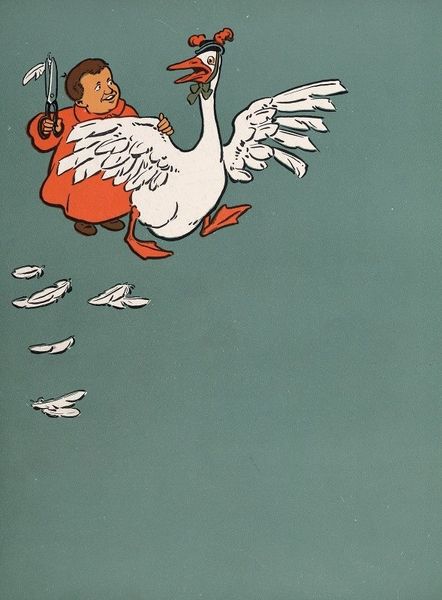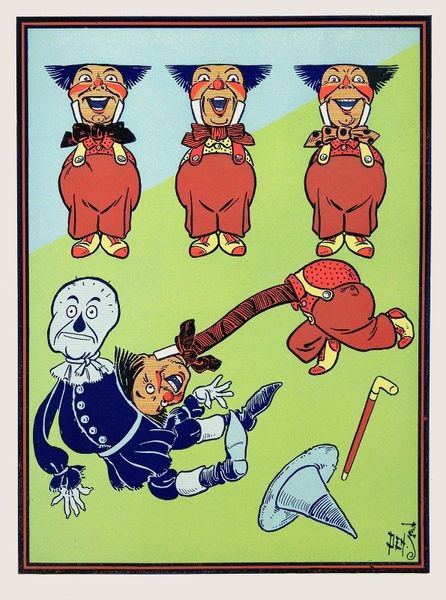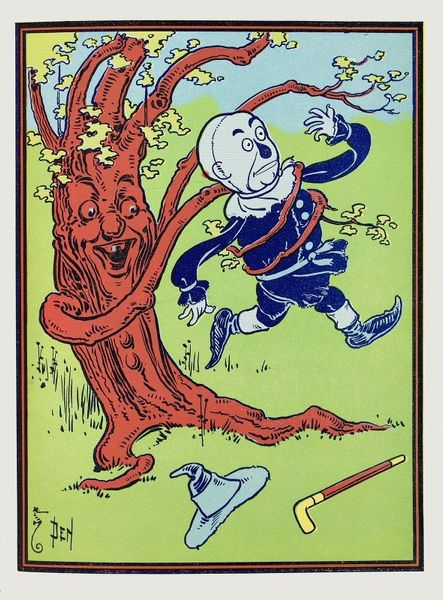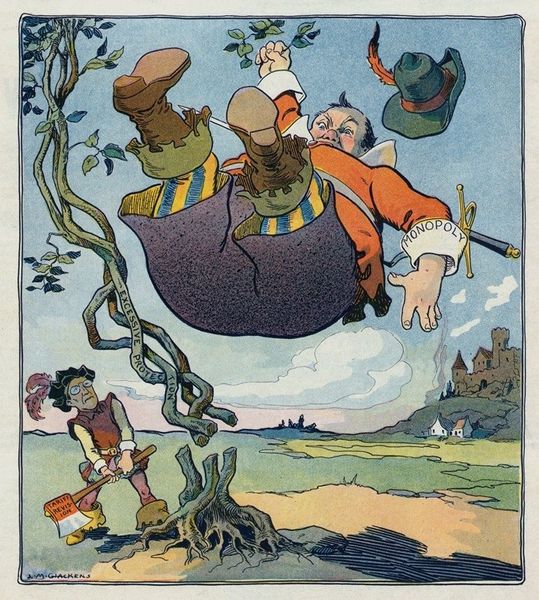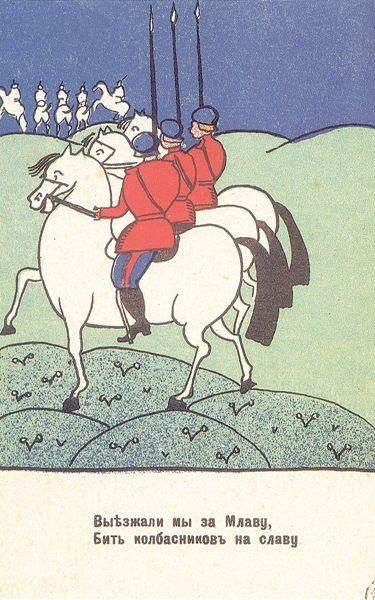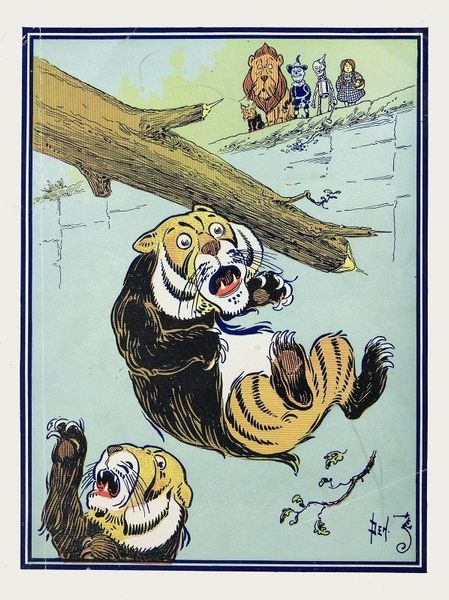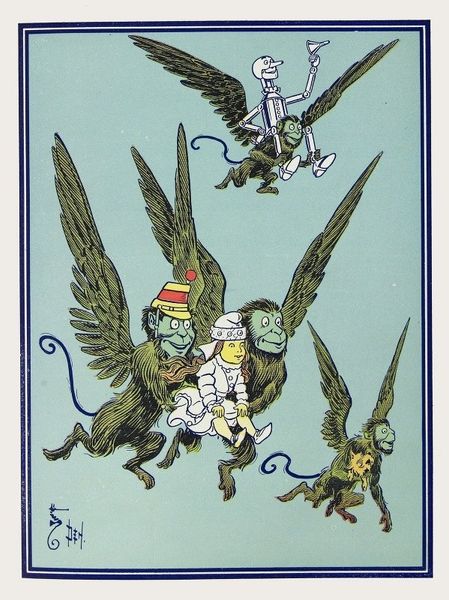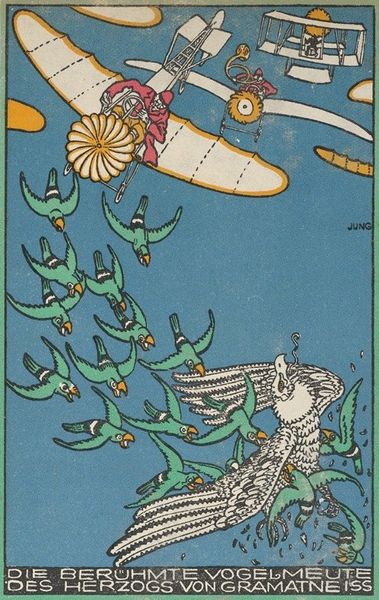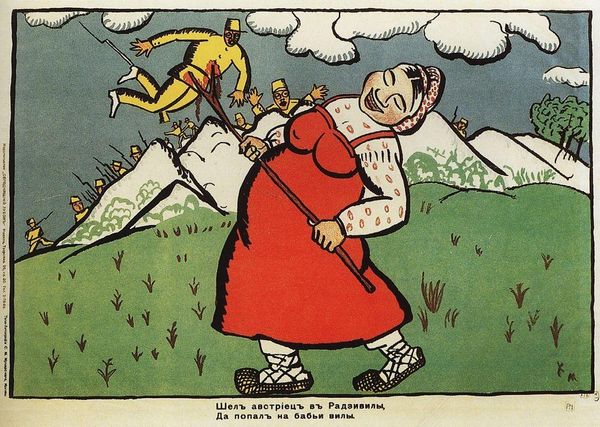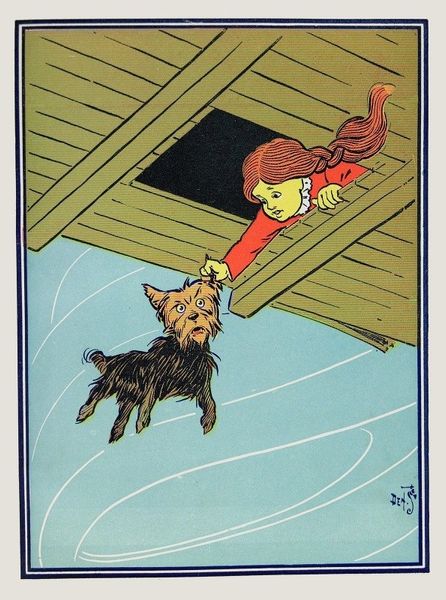
Copyright: Public Domain: Artvee
Editor: Here we have "The Stork Carried Him Up Into the Air," a drawing by William Wallace Denslow from 1900. I find the scene quite whimsical; the image shows a figure held by a stork above a winding landscape. What social narratives might we unpack within this work? Curator: This illustration, likely created for a children's book, hints at anxieties surrounding the figure's precarious position and dependence on the stork, despite its lighthearted surface. Consider how the figure’s vulnerability contrasts with the stork’s power. Who does the figure represent? Is it innocence, ignorance, or perhaps a social class being carried, willingly or not, by forces beyond its control? Editor: That's a great question! The stork could also embody societal structures like class or even government. The figure, suspended and seemingly powerless, reminds me of the anxieties surrounding wealth distribution and societal mobility in Denslow's time. Do you think that Denslow, given his political cartooning background, intentionally layered this critique into a children's illustration? Curator: Absolutely! We need to contextualize Denslow’s involvement with political satire. His visual language, even in children’s illustrations, might contain subversive critiques of authority. The stork, as a symbol of fortune and new beginnings, becomes ironic when viewed as an instrument of a possibly unfair, imbalanced system. Are we, like the figure, being delivered to a predetermined destination, or do we have agency? Editor: So the apparent lightness veils a potentially potent commentary on power dynamics! Viewing this through a critical lens opens up an entirely different dialogue about the artwork. Thank you for sharing these ideas. Curator: My pleasure! Remembering that even seemingly simple images can reflect complex social dynamics allows us a richer understanding of the art and its world.
Comments
No comments
Be the first to comment and join the conversation on the ultimate creative platform.
